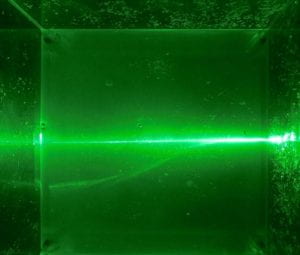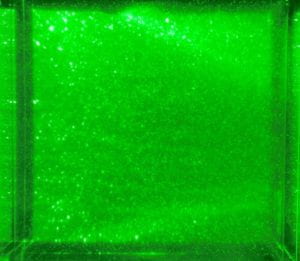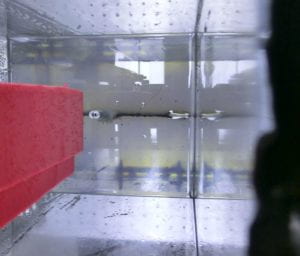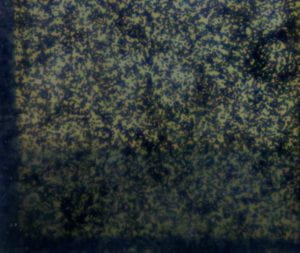
Fig.1. Setup for imaging of soil structure interaction in transparent soil models using Laser light
An optical system consisting of a laser light, camera, frame grabber, and a computer has been developed to optically slice a transparent soil model (Fig. 1). A distinctive laser speckle pattern is generated by the interaction between the laser light and transparent soil (Fig. 2). Two laser speckle images before and after a deformation were used to calculate the displacement field using an image processing technique called digital image correlation. The comparative study shows that transparent soil can be used to study natural soil with some limitations. Transparent soil and the developed optical system could be used to explore opportunities for more advanced non-intrusive three-dimensional deformation measurements for various soil-structure interaction problems.
 |
 |
Fig. 2. Top view (LHS) and front view (RHS) of Laser sheet
The actual setup for generating the laser light sheet consists of a laser light source and laser sheet generator lenses as shown below (Fig. 3).
Fig. 3. Typical setup for optical imaging in transparent soils
Although laser light sheets have been used successfully for static applications, a number of problems arise during the dynamic tests, mainly, illumination issues with the light intensity in the illuminated plane was found to be below the light sensitivity of the camera at high imaging rates. To overcome this, a new procedure referred to as the embedded plane technique is introduced (Fig. 4). The technique consists of seeding an embedded plane with opaque particles sandwiched within the transparent soil to visualize in-plane granular kinematics.
Fig. 4. Top view (LHS) and front view (RHS) of embedded sheet
Primary References
- Chen, Z., K. Li, M. Omidvar, M. Iskander (2017) “Guidelines for DIC in geotechnical engineering research,” J. of Physical Modelling in Geotechnics, Vol.17, No.1, pp. 3–22, doi: 10.1680/jphmg.15.00040, ICE [link]
- Sadek, S., M. Iskander, and J. Liu (2003). Accuracy of digital image correlation for measuring deformations in transparent media. Journal of Computing in Civil Engineering. Vol. 17, No. 2, pp. 88-96, ASCE [link]



